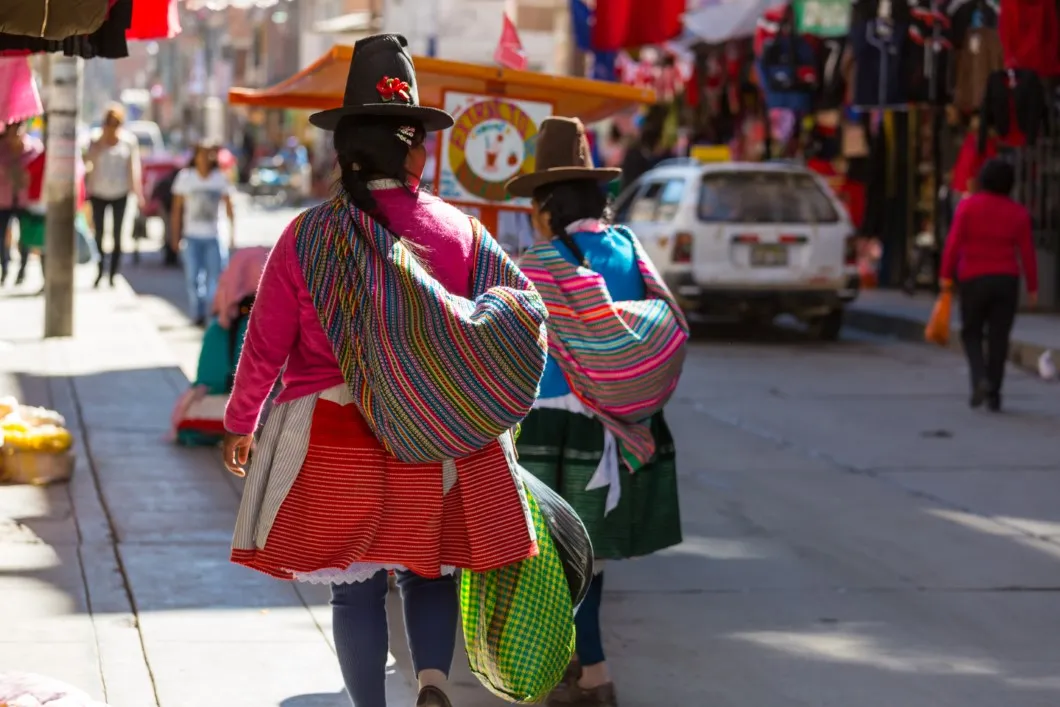
Peruvian tourism businesses have seen their recovery forecasts seriously affected due to the ongoing strike that is devastating the country. With only at the beginning of the Holy Week, more than 100 million soles have been lost.
The Peruvian tourism sector has been significantly affected by the protests of transporters close to Easter celebrations, a season in which tourist operators hoped to collect - or come as close as possible to - the US$ 182 million that they were able to produce in the years before the pandemic.
The National Chamber of Tourism (Canatur in Spanish) estimates losses of at least 100 million soles from last week to today due to the blockades. In Lima alone, investments of almost 20 million soles were lost in tourist services due to Monday's curfew. In addition, passengers cannot go to Cusco because they are prevented from traveling within the national territory. Not to mention that in the south, a sector of protesters also tried to take over the Juliaca airport. People are left without excursions, Machu Picchu or the possibility of returning to their cities of origin.
The Peruvian Association of Inbound and Domestic Tour Operators (Apotur) reported that foreign tourists who had planned a trip to the country have so far canceled 10% of their tourist reservations for this month.
"People are canceling tourist packages, which include tourist transportation, hotels, restaurants, guides, among other services," commented Enrique Quiñones, president of Apotur, to Gestión news.
The tourists who canceled their trips to Peru are mainly from the United States and Latin American countries, and were expecting to visit Lima, Cusco, Puno, Pisco and Nazca.
Quiñones now points out that the latter destinations are no longer being included due to roadblocks on the highways leading to these areas.
It is estimated that the tourism sector is losing close to US$1,100 for each tourist who does not visit Peru.
On the other hand, the president of Ahora Peru, Blanca Chavez, assures that 80% of the reservations in the south of the country have been canceled, including flights, lodging, tourist packages and restaurants, aimed at domestic and, above all, inbound tourism. As it is recalled, the Holy Week season takes place this month between Sunday, April 10 and Saturday, April 16.
In this sense, he points out that the proposal of the Ministry of Economy and Finance (MEF) to exempt some products of the basic family basket from VAT for six months is insufficient since the recovery process of restaurants in this area could take an average of three years.

The South is Paralyzed
The drop in tourism in the Imperial City of Cusco is increasing due to the social uproar. Easter Week will not be the breath of fresh air that tourism operators were expecting. According to the president of the Chamber of Commerce of Cusco, Edy Cuellar, there are already more than 1,000 trip cancellations for April and thus fewer tourists are expected. The curfew dictated for Lima generated uncertainty and interrupted traffic to Cusco.
The head of the Municipal Company of Festivities of Cusco (Emufec), Fernando Santoyo, said that it is estimated that the political and social crisis will affect 15% of the projected tourism for this month. In other words, around 10,000 fewer tourists would visit Machu Picchu due to the protests. In economic terms, we are talking about a loss of more than 1 million soles for Cusco.
In Arequipa the situation is worse. Enrique Santana, president of the Association of Tourism Travel Agencies (AVIT in Spanish), said that the Colca Canyon, one of the most visited sights, was already suffering from wear and tear and that other attractions are not being exploited. He added that if there is no access to the region, minimum numbers to continue with the recovery of the sector will not be met.
Reactions
Calos Canales, president of Canatur stated: "The worst thing is that there are people who do not want to leave Lima in their own vehicles. The tourists who come to Peru for 15 days usually go overland from Ica to Cusco and Puno and then finish their trip".
Blanca Chávez, President of Ahora Perú said: "Ayacucho was waiting for a good Holy Week for a long time. We had many expectations and reservations. But who can guarantee us that there will be no strike in the south? People are scared, as is natural".
It should be noted that the Holy Week holidays account for 35% of annual sales in the tourism sector.









